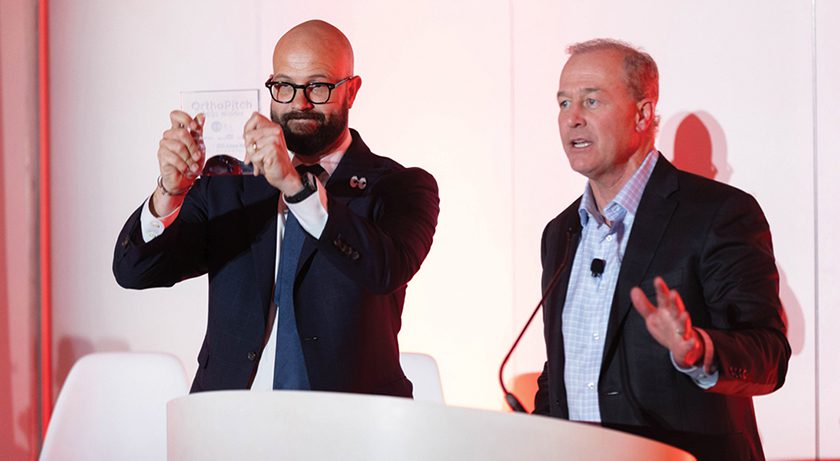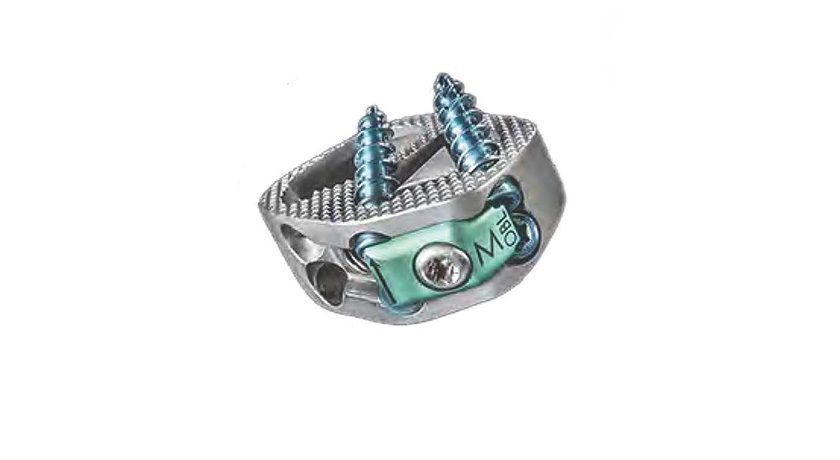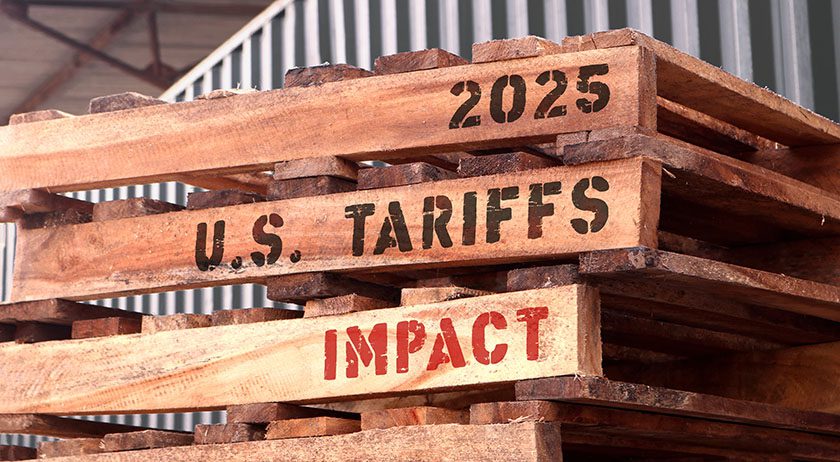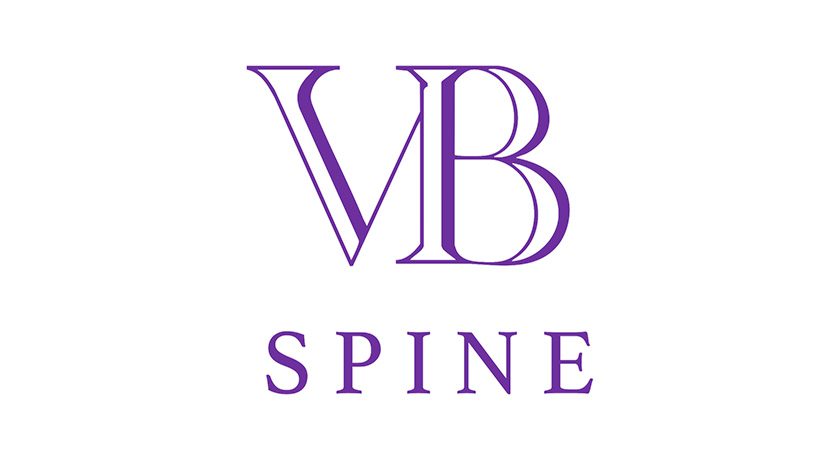

 Copy to clipboard
Copy to clipboard 
We met with industry and surgeons at the American Academy of Orthopaedic Surgeons (AAOS) Annual Meeting and heard an overall sense of optimism about market growth and new technology. During our time in San Diego, several topics and trends rose to the top of conversations: enabling technology, orthobiologics and M&A activity. We are recapping highlights of those discussions here.
So much activity happens at AAOS. Our team covered more than 20 product announcements leading up to and during AAOS. Many of them are from small orthopedic companies, and are worth a read. Over the next month, we’ll also bring you surgeon and executive insights learned at the conference.
Enabling Technology Takes Center Stage as Companies Expand in the Market
VISIE, a 3D spatial computing platform that allows for continuous anatomic auto tracking for robotic surgery without pins, arrays or manually registering anatomy, won the top prize during AAOS’s OrthoPitch, a live event patterned after Shark Tank. VISIE demonstrates the possibilities for next-generation robotics, and its win signals the importance of enabling technology in the future of orthopedics.
“When we think about registration, we might think about 40, 100 or 350 points in a manual registration with any system on the market,” said Doug Fairbanks, President and CEO of VISIE, during the live pitch event. “At the same time, VISIE will take 376,000 points in a fraction of a second.”
Robotics continues to disrupt the competitive dynamics in joint replacement and spine by providing implant pull-through for companies with systems. Expectedly, Stryker, Zimmer Biomet, Johnson & Johnson MedTech and Smith+Nephew all touted their robotic systems and expanding applications at AAOS.
There was also a significant presence and update from other robotic companies. Globus Medical featured the ExcelsiusFlex robotic and navigation platform for knee replacement. Both an imageless and CT-based registration system that allows for multiple surgical approaches, ExcelsiusFlex is Globus’ foray into joint replacement. THINK Surgical noted its growing number of collaborations with implant partners, and Orthokey highlighted its newly CE Marked ROBIN.
New Orthobiologic Products and Partnerships Signal Important Role Products Play in Healing
The orthobiologics market is experiencing a steady cadence of new product launches and partnerships, which is driving focus on the space. Companies pitched at the Canaccord Genuity Musculoskeletal Conference ahead of AAOS and had significant placements in the Annual Meeting’s exhibit hall — both of which seemed more prominent than in years past.
Orthobiologics efficacy remains a critical part of AAOS’s advocacy. The Annual Meeting dedicated multiple sessions to current product guidelines and future techniques. A highly skilled spine surgeon in minimally invasive and robotic procedures told us that biologics is the future of orthopedics. We heard surgeons are expressing interest in choosing a biologic before an implant, while others are seeking options to expand office-based orthopedics and delay joint replacement.
We met with multiple orthobiologic companies that stressed the importance of having differentiated, quality products and OEM partnerships in the industry. In recent months, Kuros Biosciences signed a new agreement with Medtronic and noted that it would expand into extremities; LifeNet Health launched PliaFX Flo DBM to be distributed by Johnson & Johnson MedTech; MTF Biologics expanded its partnership with Kolosis Bio.
Public companies in the space have also noted significant growth. BONESUPPORT’s net sales increased by 52% from 2023 to 2024 due to the expansion of its CERAMENT product line, and Kuros Biosciences sales grew 125% from 2023 to 2024, mainly due to the expansion of its MagnetOs product line.
Further, more than a handful of orthobiologic companies have received FDA Breakthrough Device Designation in the last two years, which is a promising sign of disruptive technologies to come.
Recent M&A Announcements Capture Attention
“What’s the outlook for M&A activity?” was a question we fielded in numerous conversations. After a quiet 2024, the first three months of this year have brought eight announced OEM deals and three supplier deals that included some by orthopedics’ largest players.
Stryker announced the divestiture of its spine business to VB Spine, a Viscogliosi Brothers company. Zimmer Biomet plans to acquire Paragon 28 to expand its foot and ankle business, while Medacta acquired Parcus Medical from Anika to build upon its sports medicine portfolio. Globus Medical intends to enter the interventional spine space with its purchase of NevRo.
Multiple companies we heard from at Canaccord’s conference and AAOS said they remain acquisitive of assets or companies that would lead to growth opportunities. They are sending a strong signal that there’s potential for more activity in the months ahead. It’s significant to note that most of the recent acquisitions have involved established, revenue-generating companies. A few startups wondered if it might take longer than expected to exit in the current M&A environment.
Our latest chart of the month compares 2017 to 2020 M&A activity to 2021 to 2024 activity. Orthobiologic and digital/enabling technology acquisitions are priority markets today.
It is always great to connect with so many members of industry at AAOS. What learnings did you take away from the Annual Meeting? Is there a company that we should absolutely cover in 2025? Reach out.
We met with industry and surgeons at the American Academy of Orthopaedic Surgeons (AAOS) Annual Meeting and heard an overall sense of optimism about market growth and new technology. During our time in San Diego, several topics and trends rose to the top of conversations: enabling technology, orthobiologics and M&A activity. We are...
We met with industry and surgeons at the American Academy of Orthopaedic Surgeons (AAOS) Annual Meeting and heard an overall sense of optimism about market growth and new technology. During our time in San Diego, several topics and trends rose to the top of conversations: enabling technology, orthobiologics and M&A activity. We are recapping highlights of those discussions here.
So much activity happens at AAOS. Our team covered more than 20 product announcements leading up to and during AAOS. Many of them are from small orthopedic companies, and are worth a read. Over the next month, we’ll also bring you surgeon and executive insights learned at the conference.
Enabling Technology Takes Center Stage as Companies Expand in the Market
VISIE, a 3D spatial computing platform that allows for continuous anatomic auto tracking for robotic surgery without pins, arrays or manually registering anatomy, won the top prize during AAOS’s OrthoPitch, a live event patterned after Shark Tank. VISIE demonstrates the possibilities for next-generation robotics, and its win signals the importance of enabling technology in the future of orthopedics.
“When we think about registration, we might think about 40, 100 or 350 points in a manual registration with any system on the market,” said Doug Fairbanks, President and CEO of VISIE, during the live pitch event. “At the same time, VISIE will take 376,000 points in a fraction of a second.”
Robotics continues to disrupt the competitive dynamics in joint replacement and spine by providing implant pull-through for companies with systems. Expectedly, Stryker, Zimmer Biomet, Johnson & Johnson MedTech and Smith+Nephew all touted their robotic systems and expanding applications at AAOS.
There was also a significant presence and update from other robotic companies. Globus Medical featured the ExcelsiusFlex robotic and navigation platform for knee replacement. Both an imageless and CT-based registration system that allows for multiple surgical approaches, ExcelsiusFlex is Globus’ foray into joint replacement. THINK Surgical noted its growing number of collaborations with implant partners, and Orthokey highlighted its newly CE Marked ROBIN.
New Orthobiologic Products and Partnerships Signal Important Role Products Play in Healing
The orthobiologics market is experiencing a steady cadence of new product launches and partnerships, which is driving focus on the space. Companies pitched at the Canaccord Genuity Musculoskeletal Conference ahead of AAOS and had significant placements in the Annual Meeting’s exhibit hall — both of which seemed more prominent than in years past.
Orthobiologics efficacy remains a critical part of AAOS’s advocacy. The Annual Meeting dedicated multiple sessions to current product guidelines and future techniques. A highly skilled spine surgeon in minimally invasive and robotic procedures told us that biologics is the future of orthopedics. We heard surgeons are expressing interest in choosing a biologic before an implant, while others are seeking options to expand office-based orthopedics and delay joint replacement.
We met with multiple orthobiologic companies that stressed the importance of having differentiated, quality products and OEM partnerships in the industry. In recent months, Kuros Biosciences signed a new agreement with Medtronic and noted that it would expand into extremities; LifeNet Health launched PliaFX Flo DBM to be distributed by Johnson & Johnson MedTech; MTF Biologics expanded its partnership with Kolosis Bio.
Public companies in the space have also noted significant growth. BONESUPPORT’s net sales increased by 52% from 2023 to 2024 due to the expansion of its CERAMENT product line, and Kuros Biosciences sales grew 125% from 2023 to 2024, mainly due to the expansion of its MagnetOs product line.
Further, more than a handful of orthobiologic companies have received FDA Breakthrough Device Designation in the last two years, which is a promising sign of disruptive technologies to come.
Recent M&A Announcements Capture Attention
“What’s the outlook for M&A activity?” was a question we fielded in numerous conversations. After a quiet 2024, the first three months of this year have brought eight announced OEM deals and three supplier deals that included some by orthopedics’ largest players.
Stryker announced the divestiture of its spine business to VB Spine, a Viscogliosi Brothers company. Zimmer Biomet plans to acquire Paragon 28 to expand its foot and ankle business, while Medacta acquired Parcus Medical from Anika to build upon its sports medicine portfolio. Globus Medical intends to enter the interventional spine space with its purchase of NevRo.
Multiple companies we heard from at Canaccord’s conference and AAOS said they remain acquisitive of assets or companies that would lead to growth opportunities. They are sending a strong signal that there’s potential for more activity in the months ahead. It’s significant to note that most of the recent acquisitions have involved established, revenue-generating companies. A few startups wondered if it might take longer than expected to exit in the current M&A environment.
Our latest chart of the month compares 2017 to 2020 M&A activity to 2021 to 2024 activity. Orthobiologic and digital/enabling technology acquisitions are priority markets today.
It is always great to connect with so many members of industry at AAOS. What learnings did you take away from the Annual Meeting? Is there a company that we should absolutely cover in 2025? Reach out.

You are out of free articles for this month
Subscribe as a Guest for $0 and unlock a total of 5 articles per month.
You are out of five articles for this month
Subscribe as an Executive Member for access to unlimited articles, THE ORTHOPAEDIC INDUSTRY ANNUAL REPORT and more.
CL
Carolyn LaWell is ORTHOWORLD's Chief Content Officer. She joined ORTHOWORLD in 2012 to oversee its editorial and industry education. She previously served in editor roles at B2B magazines and newspapers.







